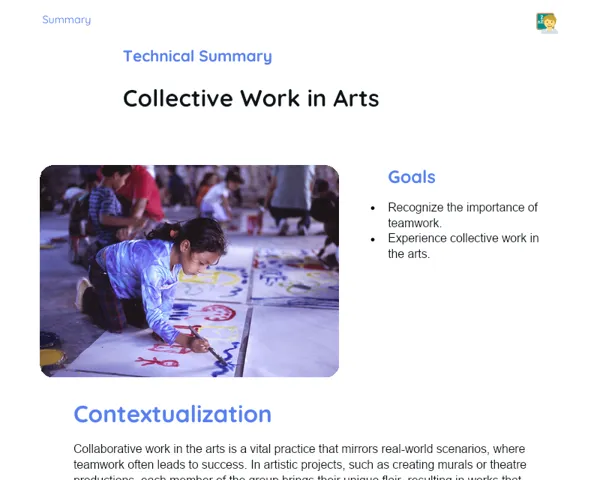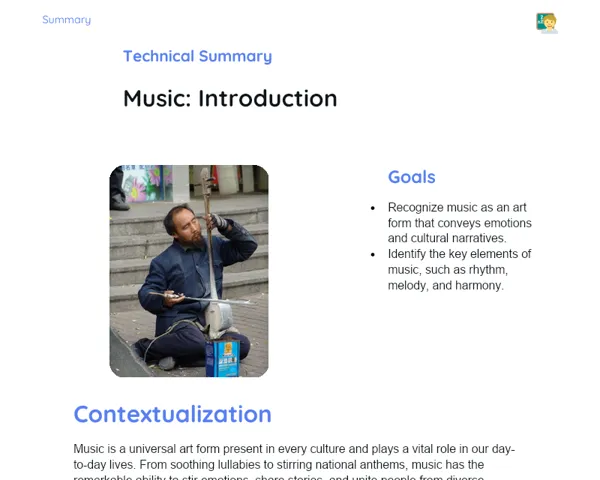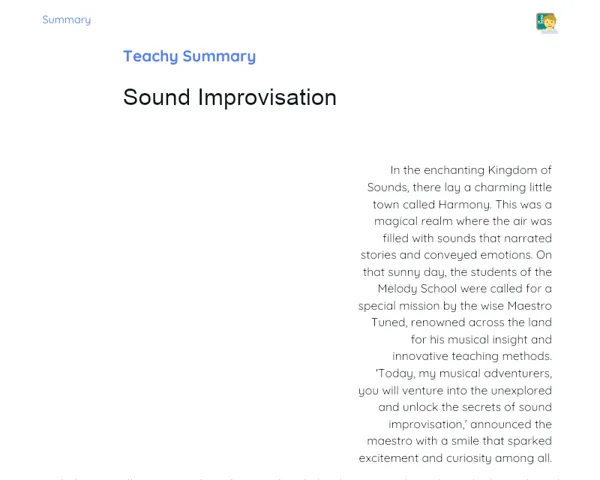Objectives
1. 🎨 Grasp the unique features of Romanticism and Contemporary Realism, emphasizing their influences, themes, and notable artists.
2. 🔍 Examine how these artistic movements are expressed across various forms of art, including painting, music, and literature.
3. 🤔 Foster critical thinking skills to compare and contrast the elements of these movements and implement this knowledge in your own artistic pursuits.
Contextualization
Did you know that Romanticism, which flourished in the 19th century, was not just an artistic movement but also a reaction to the Industrial Revolution and the French Revolution? This movement aimed to move away from Enlightenment rationality, celebrating individualism, emotion, and the beauty of nature. Conversely, Realism, which followed later, provided a critical counter to Romantic idealism by portraying life more objectively and often addressing issues of struggle and social injustice. These artistic shifts reflect broader societal values and cultural principles, demonstrating how art acts as a mirror to society.
Important Topics
Romanticism
Romanticism was an artistic and literary movement that originated in the late 18th century, peaking during the 19th century. This movement turned away from Enlightenment's rational approaches, instead embracing emotion, nature, and individual experience. In painting, Romanticism manifests through the idealization of landscapes and figures in dramatic and intense contexts. In literature, themes around love, despair, and nature were predominant, often contrasting with the rising industrial society.
-
Focus on emotion and individual experience, as opposed to Enlightenment logic.
-
Idealization of nature, landscapes, often infused with a sense of melancholy.
-
Exploration of themes like love, loss, and heroism, often in defiance of industrial-era values.
Contemporary Realism
Contemporary Realism expands upon the realist movement that began in the 19th century as a response to Romanticism. It aims to depict reality in an objective manner, with particular attention to social and economic concerns. In painting, this is reflected in everyday scenes that lack the glamour of Romantic art. Literature rooted in Contemporary Realism addresses issues like inequality, urbanization, and social strife, presenting life in its raw form.
-
Objectiveness in representing reality, rather than romanticized portrayals.
-
Concentration on social and economic issues, mirroring changes in an industrial society.
-
Depiction of ordinary scenes without any romantic embellishments, portraying life as it truly is.
Impact on Contemporary Culture
Both Romanticism and Contemporary Realism continue to inspire modern culture and artistic expression. Elements of these movements can be found across various art forms, such as music, film, and contemporary literature. The ability to express profound emotions and critically engage with societal issues are legacies from these movements that remain relevant today.
-
Inspiration for contemporary music, evident in the lyrics that delve into deep emotional experiences.
-
Modern works that critically reflect societal conditions, perpetuating the dialogue started by Realism.
-
Enduring romantic ideals in pop culture, particularly concerning love and personal freedom.
Key Terms
-
Romanticism: An artistic movement highlighting emotion, nature, and individual expression, as opposed to Enlightenment rational thought.
-
Contemporary Realism: A continuation of 19th-century Realism focusing on objective life representation, especially social and economic issues.
-
Individualism: The prioritization of personal rights and feelings, a hallmark of Romanticism.
For Reflection
-
In what ways do you think Romanticism has shaped modern society's understanding and appreciation of human emotions?
-
How could the principles of Contemporary Realism be utilized to address social challenges in your locality?
-
Why is it vital for artists and art lovers today to study historical artistic movements?
Important Conclusions
-
We examined the intricacies of Romanticism and Contemporary Realism, recognizing how these movements influenced not just art, but also the societies from which they originated.
-
We discussed how Romanticism celebrated emotion, nature, and individuality in contrast to Enlightenment reasoning, while Realism aimed for an unfiltered representation of daily life, reflecting the social realities of its time.
-
We acknowledged that these movements continue to shape contemporary culture, notably in film, literature, and music, and how an understanding of these movements can deepen our artistic appreciation and critique.
To Exercise Knowledge
- Artist’s Diary: Maintain a diary for a week to express your emotions and observations about nature, inspired by the Romantic spirit. 2. Realist Documentary: Produce a brief video documentary or a series of photographs that objectively portray your community, reflecting Realism without any filters. 3. Movements Playlist: Curate a playlist of songs that embody elements of Romanticism and Contemporary Realism, providing a brief essay that explains your selections.
Challenge
🌟 Unified Artist Challenge: Create a singular work (whether a painting, poem, piece of music, or theatrical expression) that blends features of both Romanticism and Contemporary Realism. Present your creation in an online class event and elaborate on how you integrated both movements.
Study Tips
-
Utilize mind maps to link the key themes and figures of Romanticism and Contemporary Realism, making it easier to memorize and deeply understand the concepts.
-
Join forums or online study groups focusing on art and history to discuss practical applications of these movements in modern culture.
-
Experiment with creating your own art pieces inspired by both Romanticism and Contemporary Realism, exploring how their themes and techniques can still resonate today.



